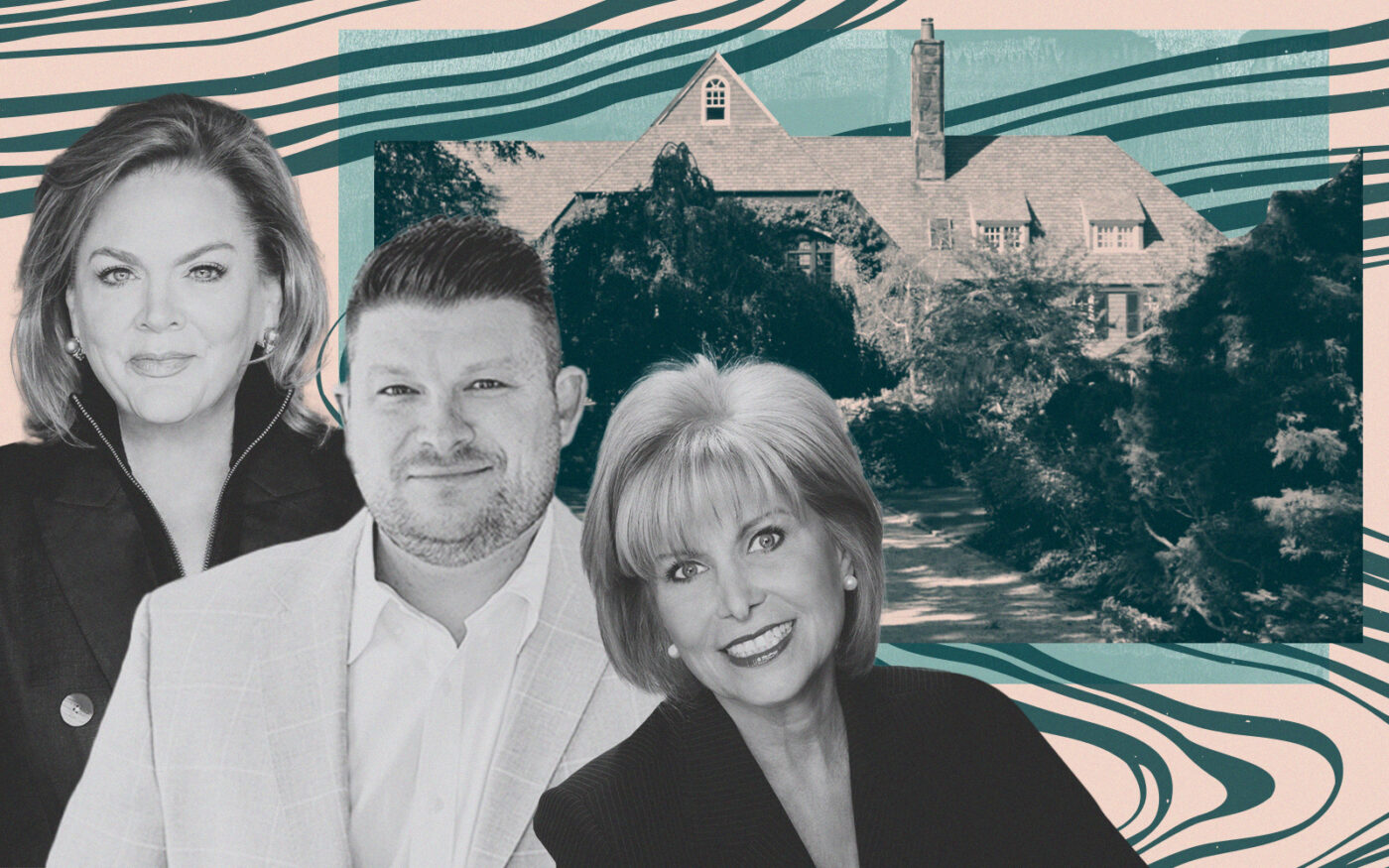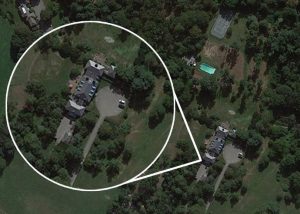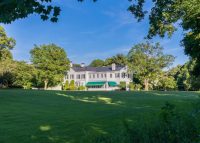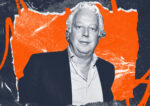 Former Gold Coast estate of John McEnroe, Tatum O’Neal hits market
Former Gold Coast estate of John McEnroe, Tatum O’Neal hits market
Trending
Their glory days gone, Gold Coast mansions compete for buyers
Waterfront estates on Long Island’s North Shore face uncertain future

Grand fireplaces, manicured putting greens and picturesque views of the Long Island Sound inspired F. Scott Fitzgerald’s “The Great Gatsby,” which romanticized Long Island’s North Shore for generations.
Dubbed the Gold Coast around the turn of the 20th century, the coastlines of North Hempstead, Oyster Bay and Huntington drew names like Vanderbilt, Rockefeller, Woolworth, Astor, Roosevelt and Frick. Powerful families built awe-inspiring estates in an array of architectural styles. In all, around 500 mansions were constructed.
But nearly 100 years later, many of the homes no longer house the uber-wealthy, or anyone at all for that matter.
Some majestic estates have been converted into museums, galleries and visiting spaces where the public can view vestiges of a bygone era. The former home of steel heir John Shaffer Phipps is now the Old Westbury Gardens, for example, and the “Eagle’s Nest” summer bachelor pad of William K. Vanderbilt is today the Vanderbilt Museum & Planetarium.
The market for remaining Gold Coast manors has been cool even as home sales across the rest of Long Island heated up, said Jonathan Miller, head of appraisals at Miller Samuel. This era’s equivalent of business moguls opt for buzzing tech hubs, oceanfront enclaves or hidden hillsides instead.
Estates with double-digit bedrooms, en-property golf courses and ornate landscaping tend to attract buyers of an older generation, Miller said. Given the demographic of likely buyers, the Gold Coast market may well dwindle even more in the coming decades.
“In Manhattan, for the affluent, it was all about getting an old-world co-op on Fifth and Park Avenue, and now it’s about getting a large condo on the 90th floor,” Miller said. “Housing stock and tastes change over time. This, perhaps, is one of those examples.”
Gilded North Shore manors bear little resemblance to Jeff Bezos’ homes in New York, Beverly Hills and Miami and Mark Zuckerberg’s Palo Alto, San Francisco and Kauai properties. Elon Musk, for his part, opted for a humble two-bedroom in a Texas suburb.
“Certain subsets of the market go in and out of favor,” Miller said. “You think of who’s making a lot of money in the economy: Wall Street is joined at the hip with the Hamptons. Tech seems to be going north to the Hudson Valley.”
High-end sales scant
On the Gold Coast, home sales north of $10 million are “extremely limited” according to data from the past decade, Miller said. Scarcity, which can drive interest in luxury homes in a given market, is not a factor there. Many buyers see the area’s estates as potential subdivisions, not restoration projects.
“They don’t seem to be as in high demand as they once were,” the appraiser said. “There’s almost too many, or seem to be development opportunities more than a single-family transaction.”
But North Shore mansions do sell, just not always for eight figures. Three Gold Coast properties priced at or above $10 million went into contract last year, but only one closed for over $10 million, said Traci Clinton, a Compass agent in the area. The other two went for just below that amount.
Clinton is now showing the six-bedroom, eight-bathroom Whitney Boathouse in Manhasset that helped inspire F. Scott Fitzgerald’s classic. Asking price: $10.4 million. Three years ago, it was listed by Douglas Elliman for $11.8 million, but even with a glowing story in Mansion Global, did not sell.

Businessman William Payne Whitney built the original structures in 1910 as a gift to his son, in part to store his 40-foot seaplane.
Jason Friedman of Daniel Gale Sotheby’s described the luxury market on the Gold Coast as healthy, with listings of around $10 million becoming “very active” in recent months. Some properties went for less than that but will be eight-figure listings once mansions are built on them.
“We’ve sold a bunch of pieces of land between $5 to $10 million, whereas the total build-out is probably going to be near $20 [million] or something of that magnitude when they’re done,” he said.
One thing the luxury agents and Miller can agree on is that selling trophy homes takes patience, and the slower pace of luxury Gold Coast sales is no exception. The pool of buyers interested in massive homes — the kind with guest houses, vast landscaped grounds, more bathrooms than bedrooms and full-time staffs — is much smaller and more selective than the population of McMansion buyers.
“The high-end market was very strong in Long Island in general, and the Hamptons, the North Fork and the North Shore,” Miller said. “But absent from that activity seems to be the estates.”
According to a Miller Samuel report, median and average sale prices are still sharply above pre-pandemic levels for Long Island luxury homes, though they did slip in the past year. More than 1 in 4 sales was for above the last asking price.
Zillow’s website shows 11 North Shore homes listed at $10 million or more. Their average asking price is $22.7 million. About half have been relisted.
Wealth shifts east
The Hamptons market has increasingly out-competed the North Shore in the Covid era. Sprawling mansions that date back a century or more typically need significant renovations, which became less appealing to buyers during the pandemic.
But big buyers often don’t demand homes in move-in condition, said Clinton, who noted that the rising costs and shortage of contractors in recent years have eased.
“I think it’s calmed down a bit,” she said.
Most of the interest in the Whitney Boathouse has come from people familiar with North Shore living. Some are seeking a summer oasis, others a full-time home. The estate, which has been in the same family since 2002, features a private beach, waterfalls and private wings.
Friedman said “98 percent” of his clientele is local, though buyers also come from Queens, Brooklyn, New Jersey and overseas. Some are apartment dwellers seeking a single-family house and others want to upgrade from a starter home.
Most are Gold Coast or bust.
“Once in a while, we’ll get someone who is looking at Westchester and also here, but much more often it’s deciding between which town [on the North Shore],” Friedman said.
The market is much different for buyers looking to spend under $4 million, said Adele Kuczmarski of Coldwell Banker American Homes. Manhasset is popular now for clients ranging from doctors to IT professionals, said the agent, who has the $10.5 million 191 Elderfields Road listing.
“There are 35 houses on the market today in Manhasset,” she said in August. “There’s very little inventory right now. So when they want to buy, they’re coming right out here and buying.”
Past is prologue
Questions about the future of Gold Coast mansions are not new. In the 1970s, the New York Times wrote about a dwindling market for huge homes with expensive maintenance, and the demolition of the Roslyn House and Ogden Phipps’ estate, among others.
In addition to museums, historic properties along the Gold Coast have become galleries and schools. The Webb Institute, the Lutheran Friends of the Deaf, the Glen Cove Mansion Hotel and the Nassau County Museum of Art all found homes in Gilded Age mansions in the mid-20th century.
Although no recent Gold Coast novel has achieved the status of Fitzgerald’s classic, some homes have been backdrops for film productions over the decades, from “Citizen Kane” to Netflix’s “Sabrina.” Taylor Swift used Otto Herman Kahn’s Oheka Castle in Huntington for her Blank Space music video in 2014.
But Gold Coast estates will likely never reclaim a place at the very top of the real estate hierarchy.
“If it’s been several decades of this pattern of weakness, it’s hard to imagine a market force that would change that,” Miller said. “It’s always possible, but it’s hard to imagine.”
Read more
 Former Gold Coast estate of John McEnroe, Tatum O’Neal hits market
Former Gold Coast estate of John McEnroe, Tatum O’Neal hits market
 Gold Coast estate from 1930s hits market for $30M
Gold Coast estate from 1930s hits market for $30M
 One of Long Island’s last Gatsby-era mansions is hitting the market
One of Long Island’s last Gatsby-era mansions is hitting the market




